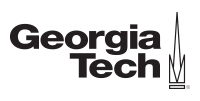Choose your session:
46,974 already enrolled!
About this course
What you'll learn
Instructors
Ways to take this course
edX For Business
5 weeks
9–10 hours per week
Self-paced
Progress at your own speed
Free
Optional upgrade available
Choose your session:
46,974 already enrolled! After a course session ends, it will be archivedOpens in a new tab.
Computing in Python II: Control Structures
At a glance
- Institution: GTx
- Subject: Computer Science
- Level: Introductory
- Prerequisites:
CS1301xI or equivalent knowledge is required. Certain problems may benefit from experience with algebra, geometry, pre-calculus, and trigonometry, but you can succeed without these.
- Language: English
- Video Transcript: English
- Associated programs:
- Professional Certificate in Introduction to Python Programming
About the instructors
Interested in this course for your business or team?
Train your employees in the most in-demand topics, with edX For Business.


